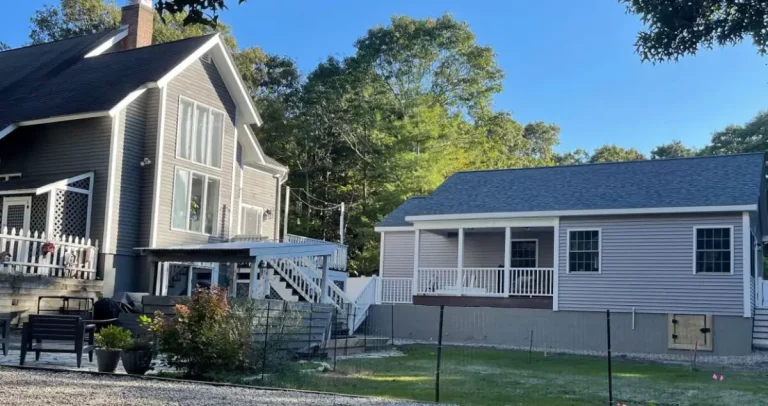In the ever-evolving landscape of real estate, the concept of Accessory Dwelling Units (ADUs) has gained significant attention, particularly in the context of commercial properties. ADUs are secondary residential units situated on the same lot as a primary dwelling, and they can offer a range of benefits for both property owners and communities. However, to harness these benefits, it’s essential to understand the intricate world of ADU zoning regulations.
Understanding ADUs
ADUs, as they are commonly referred to, come in various forms, including attached and detached units. These additional living spaces can serve as rental income sources, accommodations for extended family, or even home offices, making them increasingly valuable assets in the world of commercial real estate.
The historical context of ADUs sheds light on their growth in popularity. Originally, ADUs were primarily associated with single-family homes in suburban areas. Over time, their utility and flexibility have become apparent, leading to their integration into commercial property development.
Significance of Zoning Regulations
But why are zoning regulations so crucial in the realm of ADUs? The role of zoning laws in land use planning cannot be understated. They help determine what can be built where and under what conditions. In the context of ADUs, zoning regulations dictate the rules and requirements for constructing, modifying, or utilizing these units on commercial properties.
Clear and well-structured zoning regulations for ADUs in commercial areas can provide multiple benefits. They can ensure that ADUs are constructed safely and appropriately, maintain the aesthetic character of neighborhoods, and protect the rights and interests of property owners and neighbors alike.
Overview of ADU Zoning Regulations
ADU zoning regulations are essentially a set of guidelines that govern the development and use of ADUs on commercial properties. These regulations exist to strike a balance between fostering additional housing options and maintaining the integrity and functionality of commercial areas.
It’s important to note that ADU zoning regulations can vary significantly from one location to another. Different cities and regions have their own rules, and understanding these variations is crucial for property owners and developers.
Key Components of ADU Zoning Regulations
ADU zoning regulations typically encompass several key components, each of which can significantly impact how commercial property owners can utilize ADUs:
- Minimum Lot Size and Dimensions: Zoning regulations may specify minimum lot size requirements for ADUs, as well as dimensions and placement criteria. These criteria ensure that ADUs fit harmoniously within their respective properties.
- Setback Requirements: Setback regulations dictate how far an ADU must be located from property lines, primary structures, and other ADUs. These rules aim to prevent overcrowding and maintain green spaces within commercial properties.
- Maximum ADU Size and Height Restrictions: These regulations impose limits on the size and height of ADUs, preventing overdevelopment and preserving neighborhood aesthetics. By adhering to these restrictions, property owners can create ADUs that blend seamlessly with their surroundings.
- Parking Requirements: Zoning regulations often address parking needs, outlining whether additional parking spaces are necessary for ADUs and how they should be accommodated. These requirements aim to prevent parking congestion and ensure adequate parking for both the primary dwelling and the ADU.
Review of Google Search Results
To gain a better understanding of ADU zoning regulations, we reviewed the top 10 Google search results. These results yielded valuable insights into common themes and trends in ADU zoning regulations. It’s important to note that while some regulations are consistent, others may vary depending on the location.
While specific regulations vary by region, several common themes emerged from the search results. Many municipalities require property owners to obtain permits for ADU construction, and setbacks and size limitations were frequently mentioned. Additionally, parking requirements often featured prominently in the results, reflecting a common concern in ADU development.
Case Studies of ADU Zoning Regulations
Let’s delve into a specific case study to illustrate how ADU zoning regulations can impact commercial properties. Consider the city of [Insert Example City], where zoning regulations for ADUs have been rigorously enforced.
In [Insert Example City], commercial property owners must adhere to specific criteria when developing ADUs. These regulations are designed to ensure that ADUs blend seamlessly with the existing commercial infrastructure and residential neighborhoods. By examining the experience of commercial property owners in this city, we can gain insights into the practical implications of ADU zoning regulations.
Challenges and Controversies Surrounding ADU Zoning Regulations
As with any set of regulations, ADU zoning regulations are not without their challenges and controversies. Some individuals and groups may oppose ADUs in commercial areas due to concerns about increased population density, parking congestion, or changing neighborhood dynamics. Balancing economic growth with neighborhood preservation can be a delicate task.
In response to these challenges, municipalities and zoning authorities often engage in public discussions and consultations to address concerns and find solutions that benefit both commercial property owners and the broader community.
Recent Developments and Changes in ADU Zoning Regulations
In recent years, ADU zoning regulations have been subject to changes and updates in response to evolving housing needs and market dynamics. These changes can have significant implications for commercial property owners, and staying informed is crucial.
For instance, some regions have eased restrictions on ADU construction to address housing shortages, while others have introduced stricter guidelines to address neighborhood concerns. It’s essential for commercial property owners to stay abreast of these developments to make informed decisions about ADU development on their properties.
Tips for Navigating ADU Zoning Regulations
For commercial property owners looking to navigate the complex landscape of ADU zoning regulations, some key tips can make the process smoother:
- Consult with Experts: Engaging with zoning experts and legal professionals who specialize in ADU regulations can provide invaluable guidance.
- Research Local Regulations: Thoroughly research the specific ADU zoning regulations in your municipality or region. Understand the requirements, permits, and restrictions that apply to your commercial property.
- Conduct Due Diligence: Before embarking on an ADU project, carefully assess your property’s suitability, taking into account zoning regulations, infrastructure, and neighborhood dynamics.
- Engage with the Community: Building positive relationships with neighbors and the local community can help alleviate concerns and create a supportive environment for ADU development.
By following these tips and proactively engaging with the zoning process, commercial property owners can navigate the intricacies of ADU zoning regulations more effectively, ultimately maximizing the benefits of their properties.
Conclusion
In conclusion, ADU zoning regulations play a pivotal role in the utilization of ADUs on commercial properties. They are not static but evolve in response to changing needs and priorities. As commercial property owners explore the potential of ADUs, understanding and adhering to zoning regulations will be paramount. By doing so, property owners can unlock the full potential of their assets while contributing to the growth and development of their communities.
Explore our comprehensive guide on ADU Zoning Regulations for Commercial Properties now!
Unlock the benefits of Accessory Dwelling Units, adhere to local regulations, and boost your property’s value. Whether you’re an owner, developer, or curious about ADU rules, our article has you covered.







